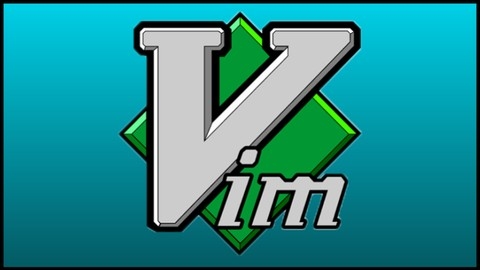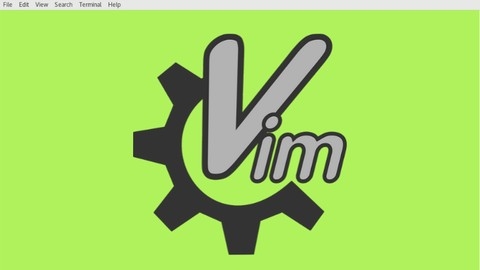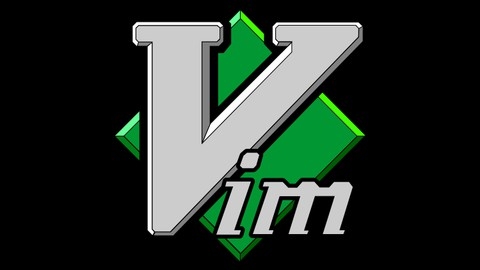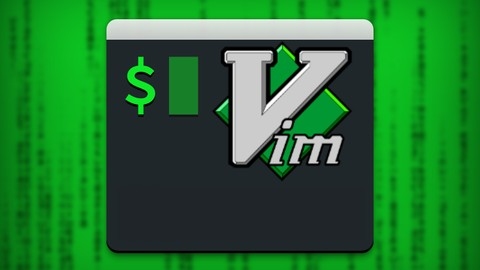If you’re looking for the best Vim courses on Udemy, you’ve come to the right place.
Vim is a powerful and versatile text editor that can significantly boost your productivity, but mastering it can be a challenge.
In this blog post, we’ll explore the top Vim courses on Udemy that will help you unlock the full potential of this amazing tool.
Vim Masterclass
The course starts with an introduction to Vim and its benefits.
You’ll quickly dive into the essentials, learning about modes, navigation commands, and how to create and edit files.
The course doesn’t just cover the basics, though.
It dives deep into advanced techniques like deleting, copying, and pasting text using Vim’s registers.
You’ll also learn how to transform and substitute text, mastering search, find, and replace operations.
One of Vim’s strengths is its text objects and macros, which allow you to perform complex operations with just a few keystrokes.
This course dedicates entire sections to these powerful features, ensuring you’ll become proficient in using them.
Visual mode, a crucial aspect of Vim, is also covered in-depth.
You’ll learn how to visually select and operate on text, streamlining your editing workflow.
Customizing Vim is essential for maximizing your productivity, and this course guides you through settings, preferences, and the .vimrc file.
You’ll learn how to tailor Vim to your specific needs, making it an extension of your thought process.
Working with multiple files and windows is a common task for developers, and this course equips you with the skills to manage Vim buffers and windows efficiently.
Additionally, you’ll explore Vim plugins, which can supercharge your editing capabilities, and learn about graphical user interfaces like GVim and MacVim.
The course also includes live Q&A calls, allowing you to interact with the instructor and get your questions answered in real-time.
You’ll not only learn the fundamentals but also gain proficiency in advanced techniques, setting you up for a more efficient and enjoyable coding experience.
Vim Essentials - One Hour to Proficiency (Vim Tutorial)
The course starts with an overview of Vim, explaining what it is and how to install it.
You’ll learn about the different modes in Vim and get a handy cheatsheet to refer to.
Once you have the basics down, you’ll dive into navigating Vim.
This includes opening files, saving and closing them, moving around within files, and using line numbers.
You’ll get plenty of practice navigating, with quizzes and exercises to reinforce what you’ve learned.
Next up is editing in Vim.
You’ll learn how to use insert mode and basic editing commands, as well as more advanced techniques like visual mode and combining multiple commands.
Again, there are practice sessions and quizzes to help you master these skills.
The course then focuses on building efficiency in Vim.
You’ll learn how to undo and redo changes, set paste mode, repeat the last change, search and replace text, and use Vimdiff to compare files.
These are all essential skills for working quickly and effectively in Vim.
Throughout the course, you’ll have opportunities to practice what you’ve learned with exercises and quizzes.
There’s even a comprehensive Vim quiz and exercise at the end to test your overall understanding.
One of the standout features of this course is the emphasis on hands-on practice.
You won’t just be watching videos or reading text – you’ll be actively using Vim and applying the techniques you’ve learned.
This is crucial for developing muscle memory and becoming truly proficient with the editor.
Vim for Ruby Developers
You’ll start by learning the basics of navigation and editing in Vim, including shortcuts and commands for efficient text manipulation.
The course covers customizing Vim settings, both for a single session and permanently through the vimrc file.
When it comes to editing, you’ll learn basic and advanced techniques for copying, pasting, cutting, and deleting text.
The course also teaches you how to search and select text within files, as well as find and replace items.
Specific to Ruby development, you’ll learn how to comment and uncomment code, run a terminal session within Vim, and implement indentation rules.
There’s even a quiz to test your Ruby shortcuts knowledge.
The course goes beyond just editing by teaching you how to work with multiple view panes, resize them dynamically, and manage multiple files and background jobs simultaneously.
For automating tasks, you’ll learn how to auto-render Ruby code and record macros to streamline repetitive processes.
The course also covers essential Vim plugins like CtrlP for fuzzy file search, NERDTree for file system navigation, Endwise for auto-completion, and Supertab for efficient tab completion.
Additionally, you’ll learn how to use terminal aliases for quick navigation and data access, as well as tools like grep for universal search queries and the ’tree’ command for visualizing file structures.
Master vi / vim Linux Command Line Text Editor
This course covers the essential aspects of mastering the vi/vim text editor on Linux.
You’ll start with the basics, learning about the different modes and how to open and close files.
From there, you’ll dive into editing techniques like inserting, replacing, deleting, and copying/pasting text.
The course also covers navigation, teaching you how to move efficiently through files character-by-character, word-by-word, line-by-line, and more.
But the course goes beyond the fundamentals.
You’ll learn advanced file options like setting bookmarks, creating backups, and recovering data.
You’ll also explore working with zip files and changing text case.
Additionally, the course covers running Linux commands directly from vim, adding and removing keymaps, opening multiple files in tabs, splitting the screen horizontally and vertically, and understanding the viminfo file.
Customization is a key aspect, with sections on changing vim’s color scheme and using sessions.
The course even touches on the vimdiff utility for comparing files side-by-side.
Throughout, you’ll gain insights into vim’s extensive configuration options, allowing you to tailor the editor to your preferences.
From basic editing to advanced customization, you’ll learn to harness the full potential of this powerful text editor.
Learn and master the Vim text editor
The course starts with an introduction to Vim, covering the basics of using this powerful text editor.
You’ll learn how to install Vim on Windows, Linux, and Mac systems, ensuring you can follow along regardless of your operating system.
Next, you’ll dive into navigation in normal mode, which is a fundamental aspect of efficient text editing with Vim.
The course will teach you how to move the cursor, scroll through files, and perform basic text editing operations in insert and visual-block modes.
One of the standout features of Vim is its command-line mode, which allows you to perform advanced operations with just a few keystrokes.
This course will guide you through using the command-line mode, enabling you to search and replace text with regular expressions, as well as record and playback macros for automating repetitive tasks.
To enhance your workflow, the course covers pane and tab management, allowing you to organize your workspace effectively.
You’ll also learn about marks and registers, which are powerful tools for navigating and manipulating text in Vim.
Customization is a key aspect of Vim, and this course will teach you how to install and manage plugins using Vundle.
You’ll explore plugins for code autocompletion, folding, mapping, and session management, enabling you to tailor Vim to your specific needs and preferences.
Throughout the course, you’ll gain hands-on experience with essential Vim features, such as command-line mode, search and replace, regular expressions, macros, panes, tabs, registers, marks, plugins, autocompletion, folding, mapping, and sessions.
VIM From Novice To Ninja
You’ll start by learning how to navigate and edit files within VIM.
This includes mastering essential skills like moving the cursor, inserting and deleting text, and using search and replace functionality.
Once you’ve grasped the basics, you’ll dive into working with multiple files and windows simultaneously.
This is a game-changer for productivity, allowing you to seamlessly switch between different files and view them side-by-side.
Customizing VIM is a key part of the course.
You’ll learn how to create a startup script to configure VIM to your preferences and install plugins to extend its functionality.
These plugins can automate tasks, provide code completion, and much more.
Interacting with the shell from within VIM is another valuable skill you’ll acquire.
You’ll learn how to run shell commands, compile code, and even capture the output directly in your VIM buffer.
This integration makes VIM an incredibly versatile tool for developers and system administrators.
The course also covers techniques for analyzing logs using VIM’s powerful search and filtering capabilities.
You’ll be able to quickly sift through large log files and pinpoint the information you need.
Throughout the course, you’ll pick up numerous productivity-boosting tricks that will make you a VIM ninja.
From seamlessly navigating between files to automating repetitive tasks, you’ll unlock the full potential of this legendary text editor.
VIM Advanced Tutorial
The course starts with an introduction to vim and the necessary prerequisites.
You’ll learn the basic Linux commands and get familiar with the vi editor.
From there, you dive into the fundamentals of vim.
You’ll understand the different modes like normal, insert, visual, command, and replace mode.
The course teaches you essential vim commands for tasks like copying, pasting, deleting, cutting, saving work, undoing, and redoing actions.
You’ll also learn about special commands, using help and history, searching and replacing text, and highlighting.
As you progress, the course covers intermediate vim concepts like split windows, diffing files, autocompletion, commenting/uncommenting lines, indentation, and running commands within vim.
You’ll learn how to configure vim for different operating systems and customize it with basic and advanced vimrc settings.
The course explains mapping and leader mapping concepts, along with set and let commands.
In the advanced section, you’ll explore vim plugin managers like Pathogen and Vundle.
You’ll work with plugins like NERDTree for file navigation, Tagbar for code outlining, and plugins for code folding.
The course teaches you about vim buffers, markers, registers, and macros.
You’ll learn how to configure vim like an IDE with features like mouse movement, tabs with NERDTree, ctags, cscope, and binary to hex conversion.
Throughout the course, you’ll gain a solid understanding of vim’s capabilities, from basic text editing to advanced customization and plugin integration.
learning vi & vim
The course starts with an introduction to Vi(m), teaching you the absolute minimum commands to get started.
From there, you’ll dive into basic editing and navigation with Lab2.
You’ll then learn about working with files, buffers, and splits in Lab3, allowing you to efficiently manage multiple files simultaneously.
Lab4 covers ex-mode and configuring Vim through the vimrc file, enabling you to customize the editor to your preferences.
The course progresses to more advanced topics like motions and text objects in Lab5, which will significantly boost your editing efficiency.
You’ll also learn about search and replace with the substitute command in Lab6 and master Visual mode in Lab7.
Integrating Vim with the shell is covered in Lab8, while Lab9 introduces you to Netrw, Vim’s built-in file browser.
Lab10 equips you with advanced tricks for loading and manipulating files.
Mastering registers and macros in Lab11 will unlock powerful automation capabilities.
You’ll also learn how to create custom keymappings in Lab12 and explore the world of plugins in Lab13.
Additionally, the course includes appendices on compiling code with :make and quickfix in Lab A, and turning Vim into an IDE using a language server in Lab B, making it a comprehensive resource for developers.
Vim Text Editor - Learn in 10 steps, for beginners.
You’ll start by learning how to install Vim and navigate its different modes.
The course then dives into essential editing commands like moving the cursor, deleting and inserting text, undoing changes, and working with lines.
As you progress, you’ll learn more advanced techniques such as searching and substituting text, executing external commands from within Vim, and writing selections to new files.
The course also covers visual selection, copying and pasting, and using options to customize Vim’s behavior.
One key aspect is learning how to leverage Vim’s powerful help system and create a personalized startup script (vimrc) to enable additional features.
You’ll also explore time-saving tools like command completion and multi-file editing with buffers and split windows.
The course doesn’t stop there - it covers more advanced movement techniques, working with the file explorer, commenting and indenting code, and provides handy reference materials like wallpaper cheat sheets.
VIM Advanced Masterclass
The course covers all the essential topics you need to become a Vim master.
You’ll start with the fundamentals like installing Vim, launching and quitting, understanding the different modes, saving files, and undoing/redoing changes.
This lays a solid foundation for the rest of the course.
From there, you’ll dive into navigation techniques like using marks and jumping between locations.
You’ll also learn how to cut, delete, copy, and paste text efficiently using Vim’s powerful commands and text objects.
Speaking of text objects, the course dedicates an entire section to them, along with transformations and folding.
You’ll learn how to operate on code blocks, quotes, brackets, and HTML/XML tags with ease.
Visual block mode is also covered for bulk operations.
The course doesn’t stop at editing - it teaches you how to find and replace text, as well as perform advanced substitutions.
You’ll also learn how to customize syntax highlighting and indentation settings to your liking.
Working with multiple files and windows is a breeze with the sections on buffers, windows, tabs, and splits.
And if you need to automate repetitive tasks, the course has you covered with macros.
Customizing Vim is also a focus, with sections on settings and key bindings.
You’ll learn how to tweak Vim to your preferences and set up custom shortcuts.
But that’s not all - the course also includes extras like opening files at specific line numbers, moving lines up or down, copying lines, and even running Python programs or HTML files directly from Vim.










